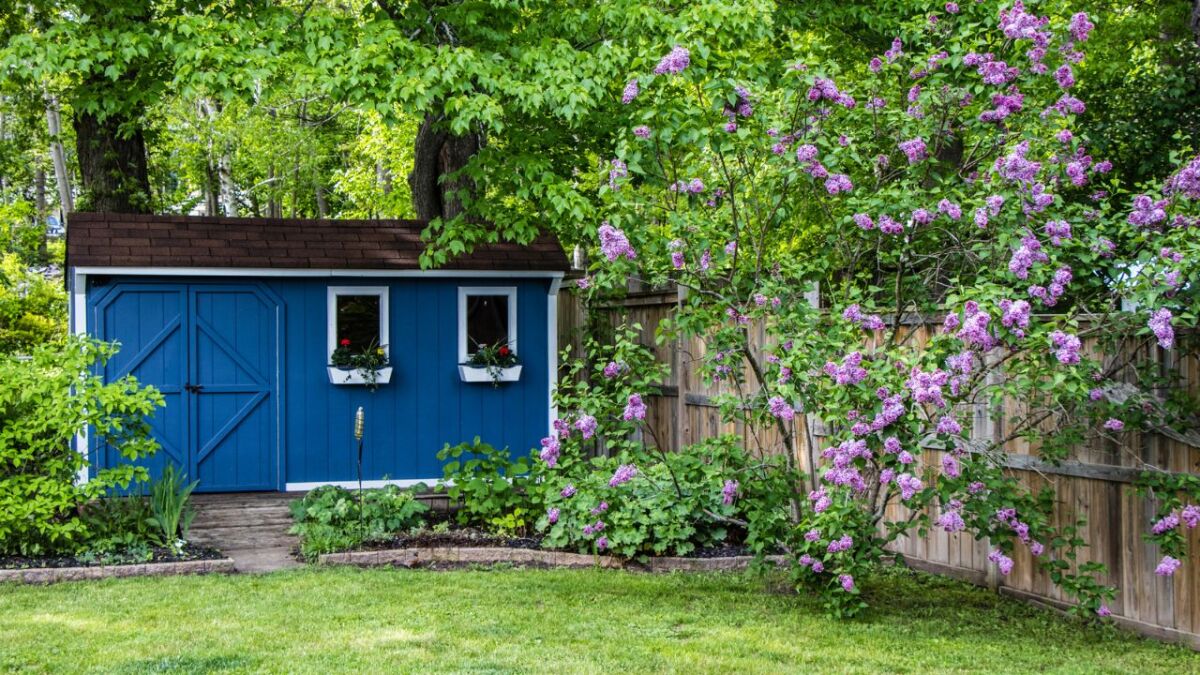
Why a garden shed is an enrichment for your self-sufficient garden (and you should get one)
👉 The key facts from this guide
- A garden shed is a practical and versatile addition to your self-sufficient garden.
- It provides space for garden tools and equipment, storage for seeds and plants, as well as a protected workspace.
- A garden shed can serve as a retreat for relaxation and enjoying nature.
- It is also suitable as a meeting place for friends and family to exchange ideas about self-sufficiency and gardening.
- When buying or building a garden shed, you should consider size, material, safety, and maintenance requirements.
- A strong foundation, with or without concrete, is important for the stability and longevity of the garden shed.
Have you also thought about taking your self-sufficient garden to the next level?
Maybe you have already thought about how to create more space for your garden tools or find a protected place for your gardening work.
The problem could be that you probably don't have enough space in your house or garage, or your garden is even far away from your house.
But don't worry, I have a solution for you: A garden house!
A garden house is not only practical, but also a great addition to your self-sufficient garden.
You will see how versatile you can use it and how much joy it will bring you. So why shouldn't you get yourself a garden house?
Self-sufficient garden as a popular hobby
There are many reasons why people choose to create their own vegetable, fruit, and forest garden.
On the one hand, it is a healthy and environmentally conscious alternative to buying groceries at the supermarket.
By growing your plants, you know exactly what is in your food and can ensure that no harmful pesticides or other chemicals have been used.
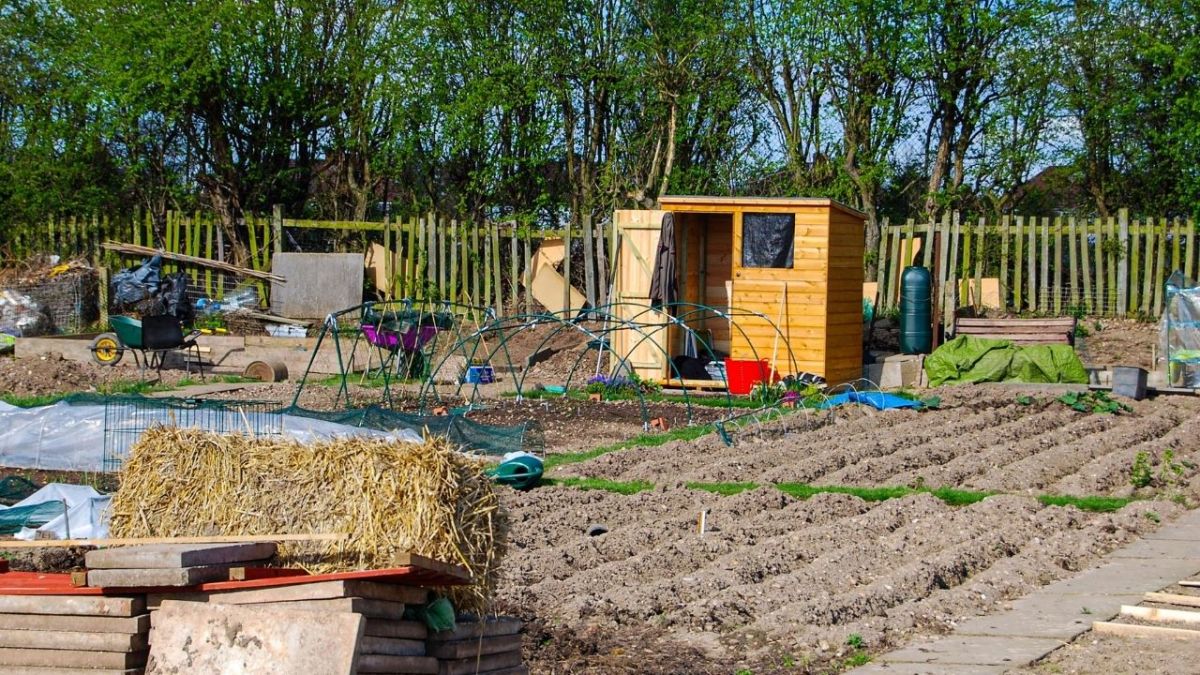
On the other hand, it is also a great opportunity to get active outdoors and enjoy nature. A self-sufficient garden also offers the opportunity to be creative and learn new skills.
Whether you are taking your first steps in gardening or are already advanced - a self-sufficient garden is suitable for everyone and can bring a lot of joy.
Advantages of a garden house for self-sufficiency
There are good reasons why a garden house is worthwhile and how it can even make your work in the garden easier.
A garden shed provides space for garden tools and equipment, is an ideal storage option for seeds and plants, and offers a protected place to work.
Furthermore, it is a beautiful retreat to relax and enjoy the garden even more after a day's work.
Let's now take a closer look at the benefits of a garden house.
Garden shed as storage option
The first advantage I see here is the garden house as a storage option.
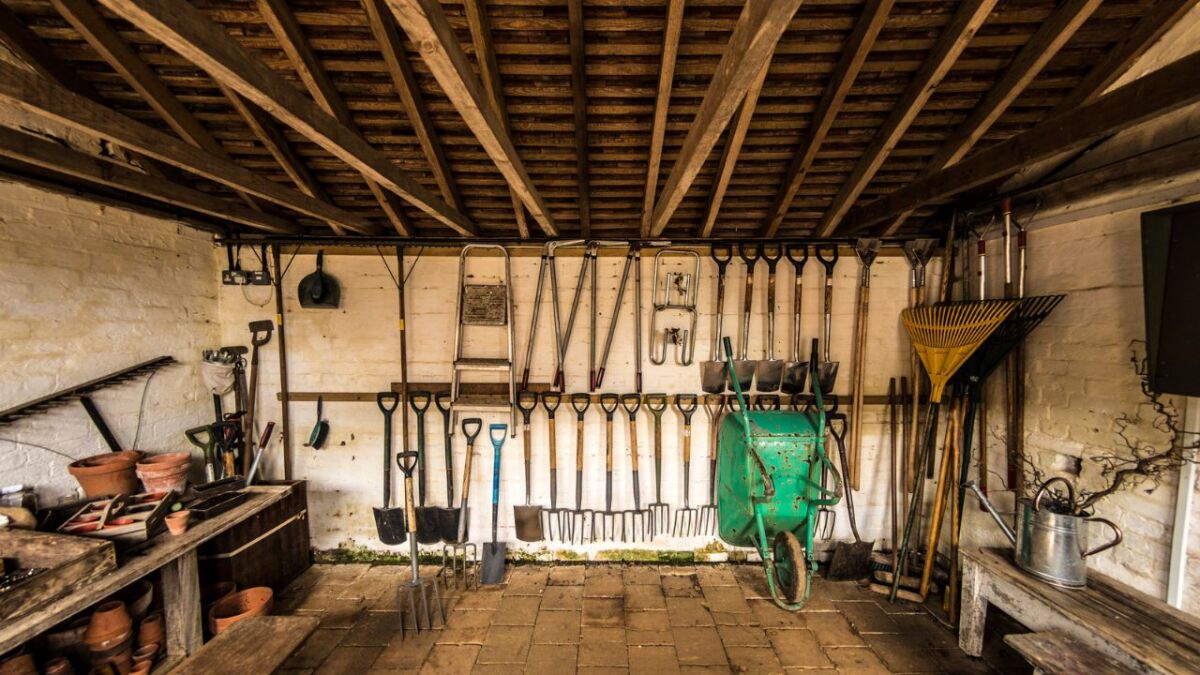
Space for garden tools and equipment
A garden house is not only a beautiful addition to the garden, but also provides plenty of storage space for garden tools and equipment.
Instead of storing everything in the house or garage, you can store it in the garden shed and have more space for other things.
Read also
With these essential garden tools, aids, and tricks, you will get through the self-sufficient gardening year - In this guide, you will learn about some of the best garden tools. This list of tools and accessories will help you grow your garden.
Storage space for seeds and plants
Moreover, for seeds and plants, a garden shed is an ideal storage option. Here they can be protected from pests and weather and also have a good temperature for germination or growth.
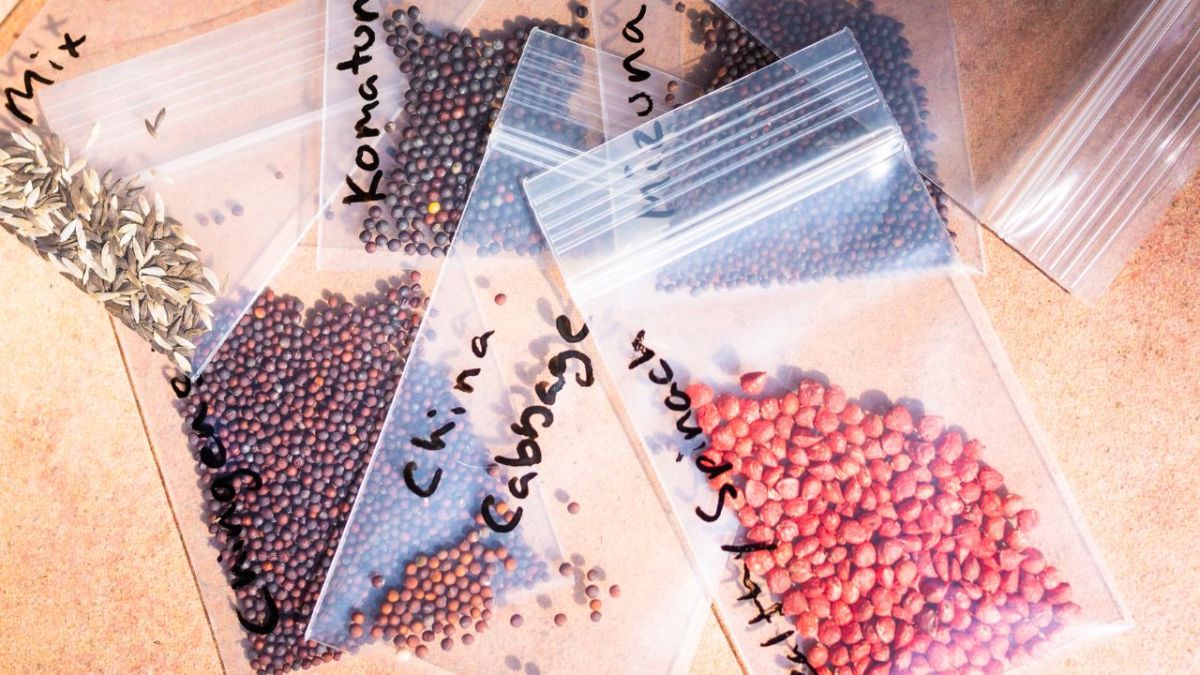
Possibility to store and process harvest
If you harvest your valuable crops in your self-sufficient garden, the garden house also provides a suitable place for storing and processing the harvest.
Here you can, among other things, preserve fruits and vegetables (if you have an electrical connection) or dry them to make them last longer.
In this way, you can make even more effective use of the self-sufficient garden and provide yourself with homegrown food all year round.
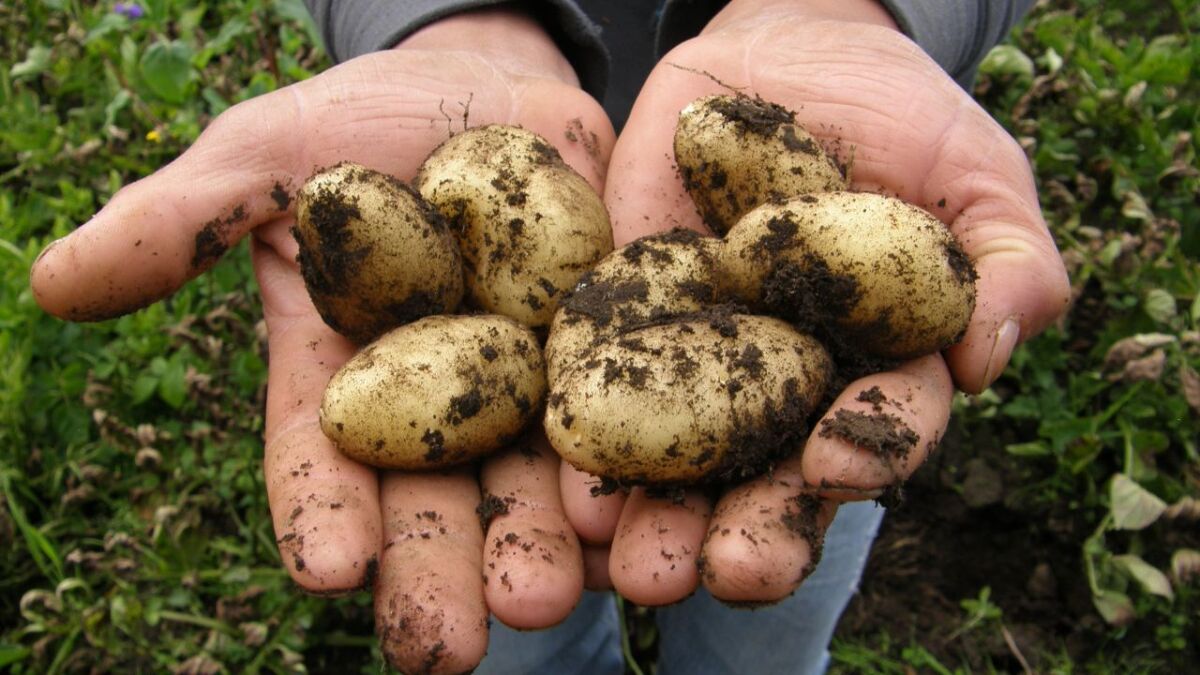
Garden House as a Workplace
Have you ever thought about using your garden shed as a workspace? There are promising facts about why this is worthwhile and how it can make your work in the garden easier.
Protection against weather and insects
Especially in rainy or sunny weather, it can be uncomfortable in the garden and hinder your work. But with a garden house, you can protect yourself from the weather and still be outside.
Overall, a garden house offers several advantages when it comes to protecting you from weather and insects in your self-sufficient garden.
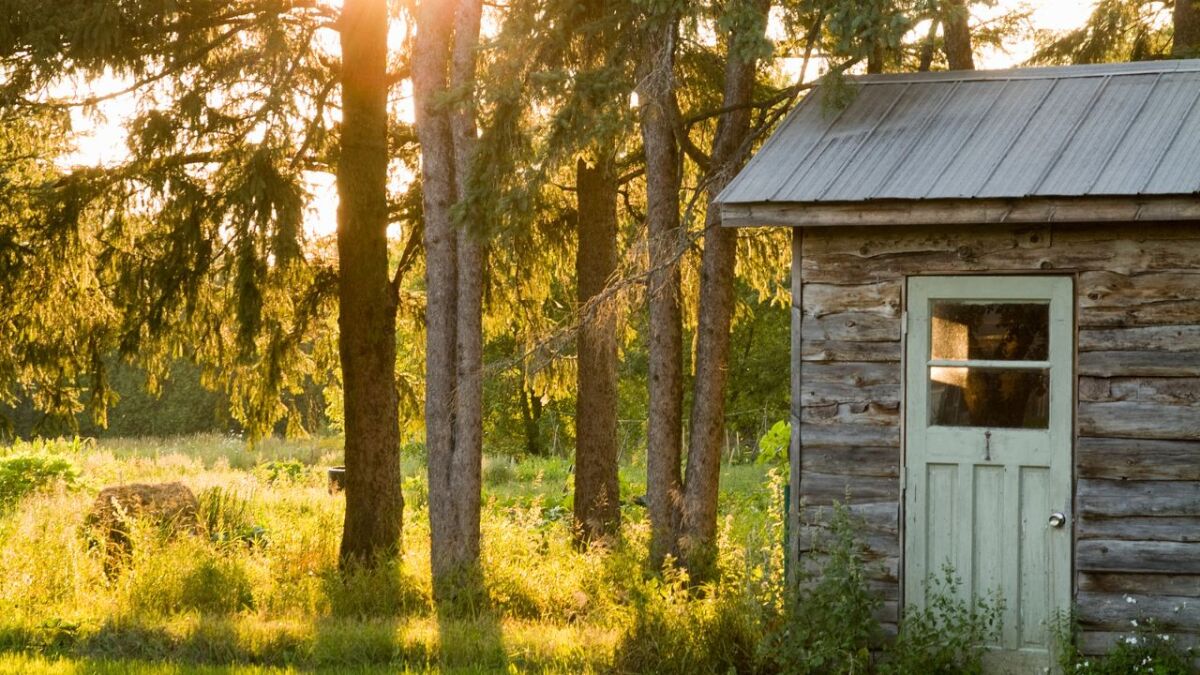
Option to propagate cuttings
You can propagate cuttings in the garden shed by planting them in suitable propagation soil and placing them in a location where they receive enough light and warmth.
Make sure to water the cuttings sufficiently to prevent them from drying out.
You can also use a small greenhouse dome or plastic wrap to increase humidity and promote the growth of the cuttings. Once the cuttings are large enough, they can be transplanted into the garden.
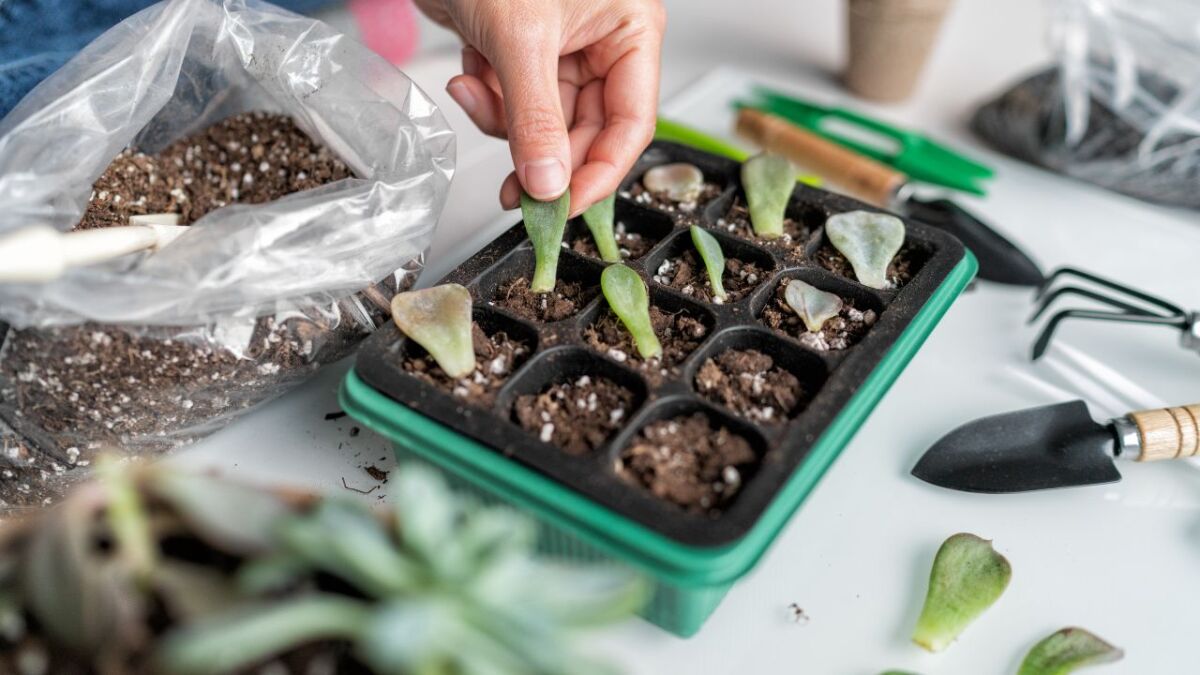
In this way, you can propagate cuttings in the garden shed and later plant them in the garden. You can read my guide on how to propagate cuttings here.
Place for DIY projects in the garden
A garden shed not only provides space for storage and protection from weather and insects, but also allows for DIY projects in the garden.
You can work here in peace and don't have to worry about having to work in bad weather or in the blazing sun.
Furthermore, for repairs or maintenance work on garden tools, a garden shed is a suitable place.
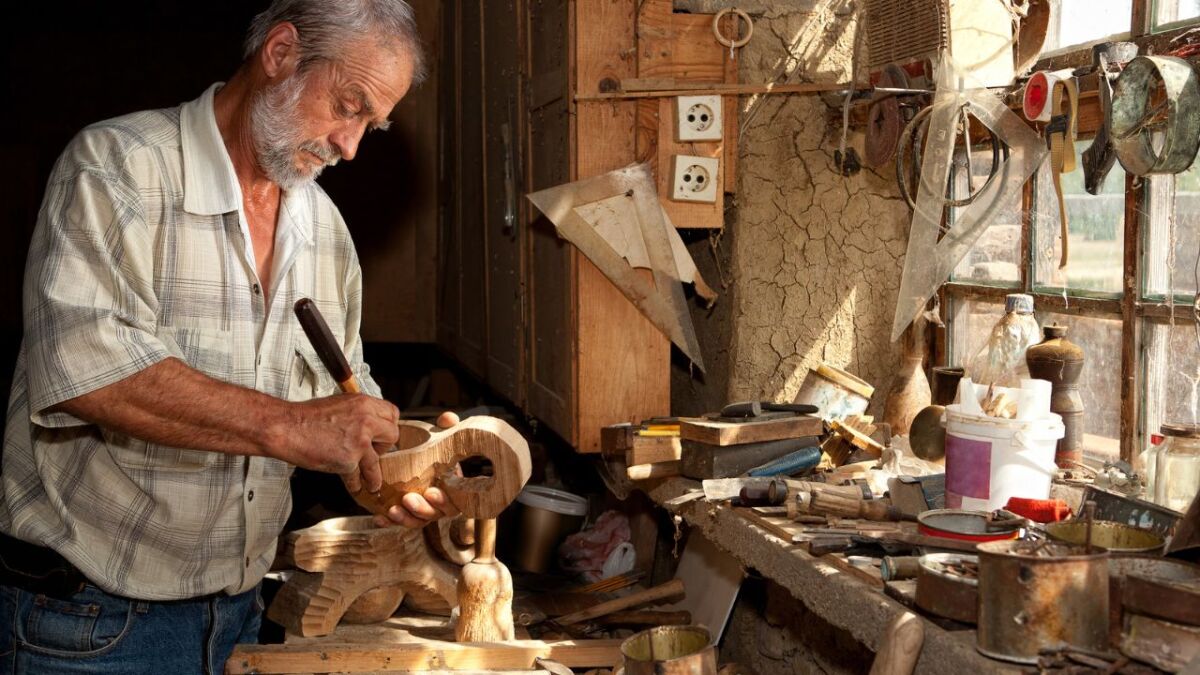
Garden house as a retreat
How great would it be to use your garden house as a retreat?
Imagine what it would be like to relax in your own little paradise and enjoy nature after a hard day's work.
A garden house is perfect for retreating and letting the soul unwind.
A few comfortable furniture and a beautiful view of the garden are all you need to feel like heaven in your garden house.
Here you can read, meditate, or simply enjoy the silence. A garden house is the ideal place to relax from the hustle and bustle of everyday life and regain new strength.
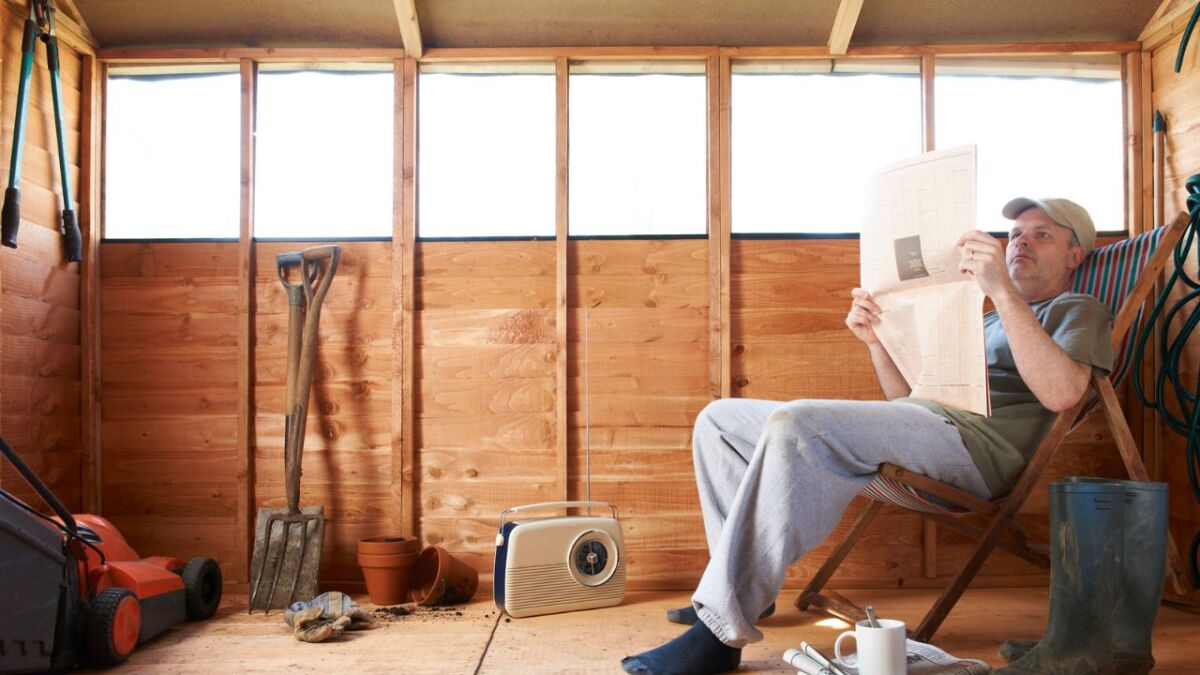
The garden house to enjoy gardening
Imagine what it would be like to work in your own little paradise and fully enjoy nature.
No matter if you plant, water, or weed, you feel comfortable in your garden shed. Here is your chair to rest.
You enjoy the fresh air and the beautiful view while recovering from the hustle and bustle of everyday life. Gardening can be so relaxing, and with a garden house, you have the perfect place to fully embrace its potential.
Even if you just want to sort your thoughts or read in peace, a garden house is a beautiful retreat. With a few comfortable furniture pieces and a good view of the garden, you can relax here and enjoy nature.
Meeting and exchanging with friends
The garden house not only offers a wonderful opportunity to retreat and enjoy nature, but also the opportunity to exchange with other people.
It is an excellent meeting point for friends and family to talk about self-sufficiency and other topics.
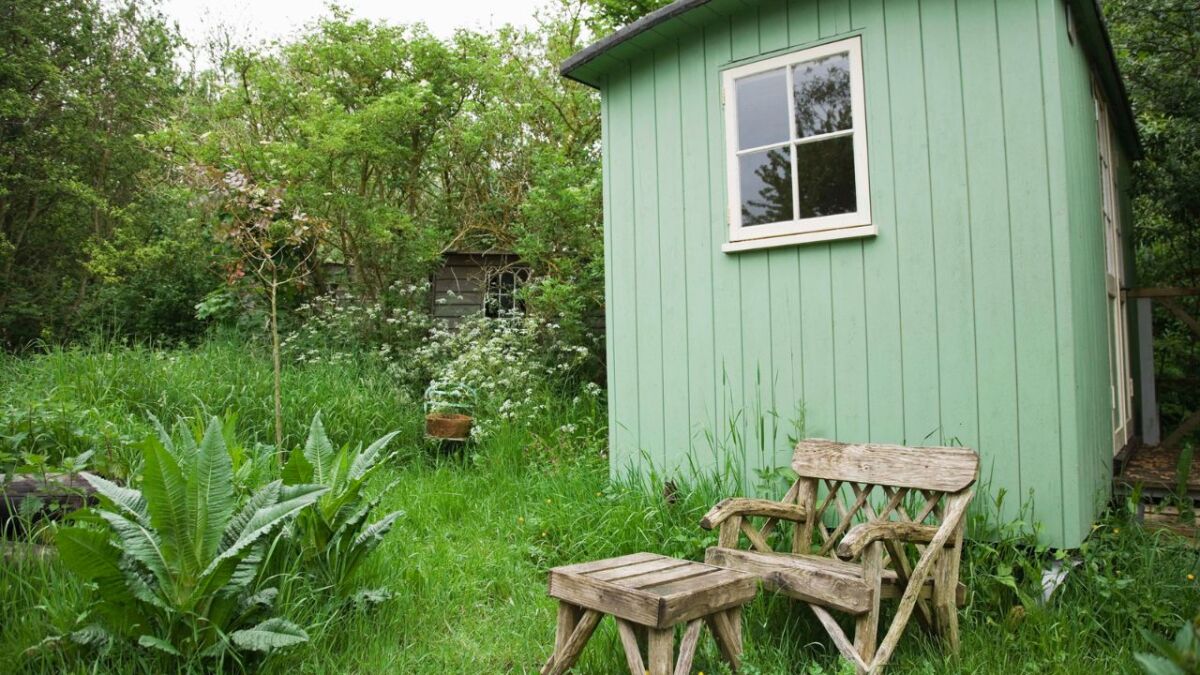
With protection from the weather and seating options, cozy gatherings can take place in the garden house. Even in bad weather or when one wants to protect themselves from direct sunlight, the garden house is an ideal destination for a group.
Inviting furniture and seating contribute to making everyone feel comfortable and creating a pleasant atmosphere. The exchange and conversations can thus take place on a relaxed level and lead to valuable insights.
In case of emergency, you have a retreat
Imagine, for some reason - be it a crisis or an emergency - you have to leave your apartment.
Then you will be overjoyed if you have an alternative where you can sleep and live.
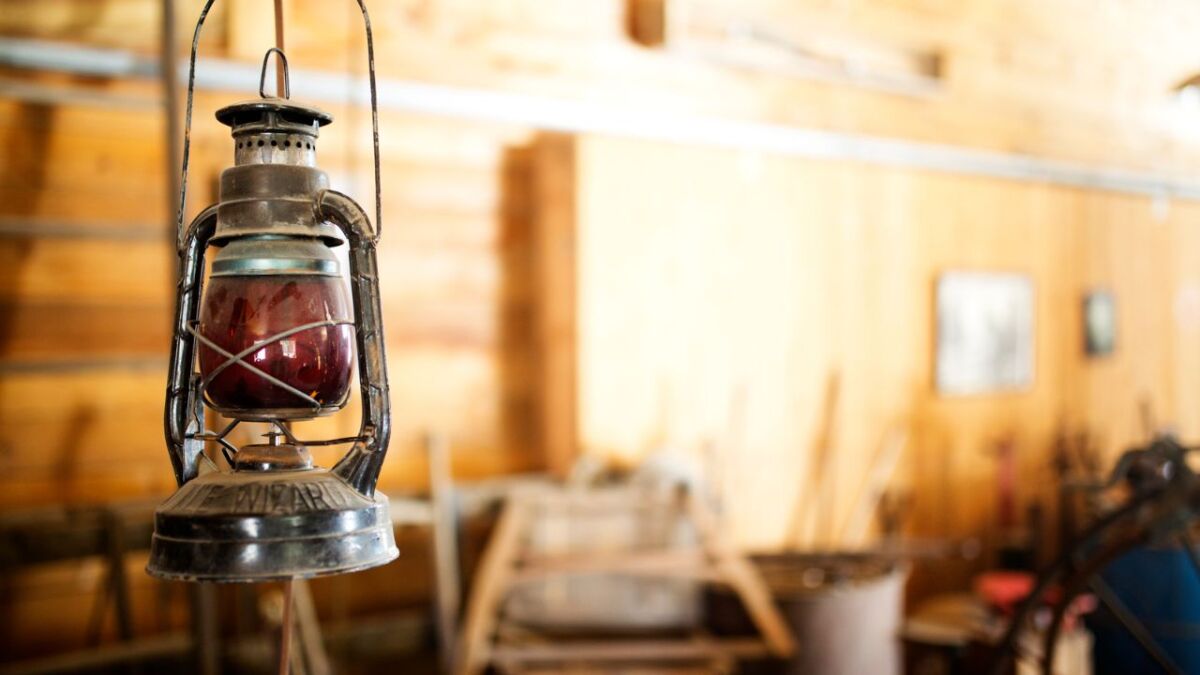
Therefore, it also makes sense to equip your garden shed with some tools, food, drinking water, cooking facilities, and a first aid kit.
Read also
The complete guide to Bug-Out Locations and how they help you survive a crisis - Learn in detail what a Bug Out Location is and how to build your refuge. Being prepared is the foundation of prepping and survival.
Build a garden shed for your self-sufficient garden yourself
If you have decided to build a garden house yourself, there are some steps you should follow to complete the project successfully.
- Choose a suitable location for your garden shed. Keep in mind that it should have enough space and that you get enough sunlight.
- Select an appropriate building plan. There are many building plans for garden sheds, so make sure you select one that meets your requirements.
- Gather all the necessary tools and materials. You will likely need things like wooden slats, nails, screws, a hammer, and a saw.
- Put the building plan into action. Follow the instructions of the building plan carefully and make sure you execute all steps correctly.
- Plaster and paint the garden shed. Once you have built the garden shed, you should plaster and paint it to protect it and give it a nice appearance.
- Set up your furniture and personal belongings. Your garden shed is now ready to be inhabited - make it your own personal retreat.
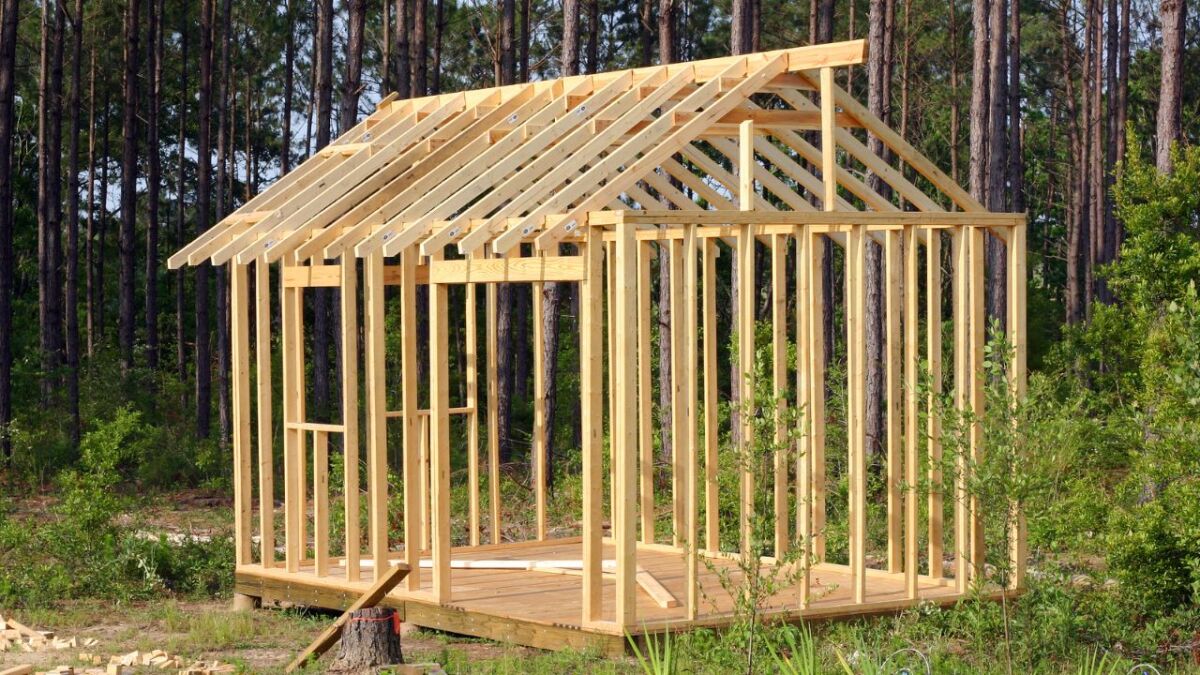
Buying a garden house - what to consider?
If you have decided to buy a garden house, there are some things you should consider to ensuring that you get the best garden house for your needs.
- Size: Make sure that the garden shed has enough space to accommodate all your belongings. Also consider that you may want space for furniture and seating.
- Material: Consider which material is best suited for the garden shed. Wood is a popular choice, but there are also garden sheds made of plastic or metal.
- Price: Compare the prices of different garden sheds to find the best deal. However, keep in mind that you may have to pay more if you want a higher quality material or more features.
- Location: Consider where the garden shed will be placed. Make sure it offers enough space and that you get enough sunlight.
- Safety: Make sure that the garden shed is secure and well anchored to prevent accidents or damage.
- Maintenance: Consider how much time and effort you are willing to invest in maintaining your garden shed. A wooden garden shed may require more maintenance than one made of plastic or metal.
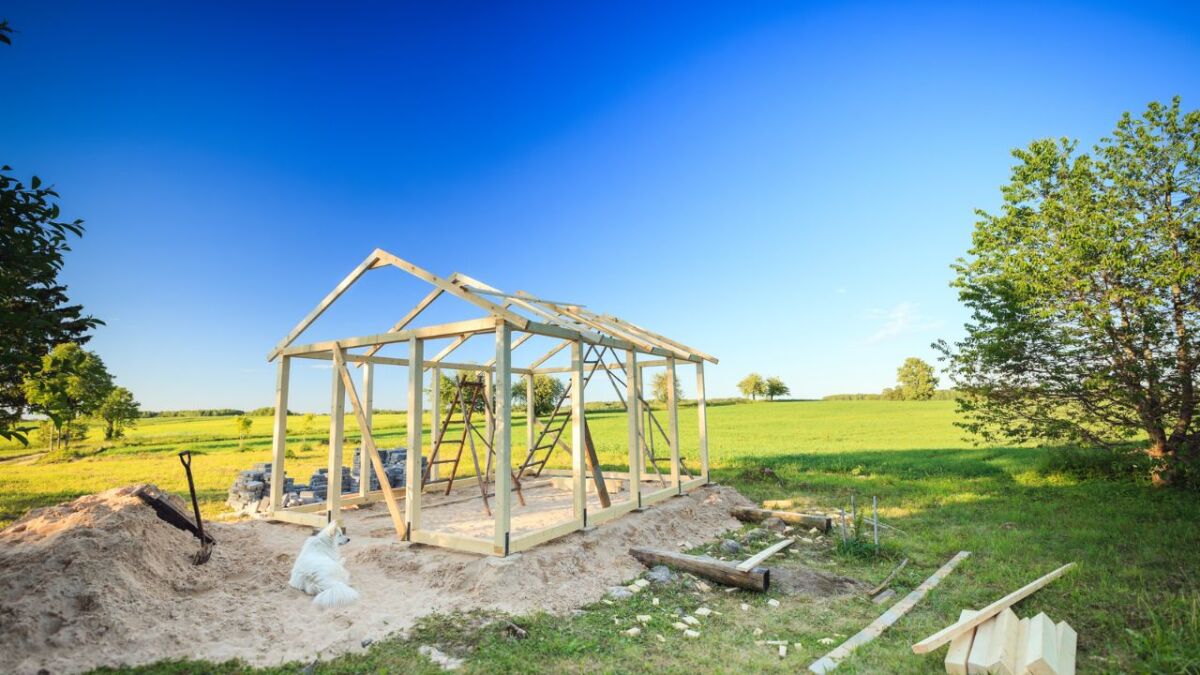
A strong foundation with and without concrete
A strong foundation is important to keep the garden house stable and secure and prevent damage.
There are different ways to create a foundation, including concrete foundations and non-concrete foundations. Here are some of the pros and cons of foundations with and without concrete:
Advantages of concrete foundations:
- High stability: Concrete is a very stable material that secures the garden house well and prevents it from slipping or warping.
- Durability: Concrete foundations typically last a long time without needing to be repaired or replaced. Easy maintenance: Concrete foundations usually require little maintenance and do not need to be painted or treated.
Disadvantages of concrete foundations:
- High costs: Concrete foundations are typically pricier than foundations without concrete.
- Long drying time: Concrete must fully dry before the garden house can be built on it. This can take some time.
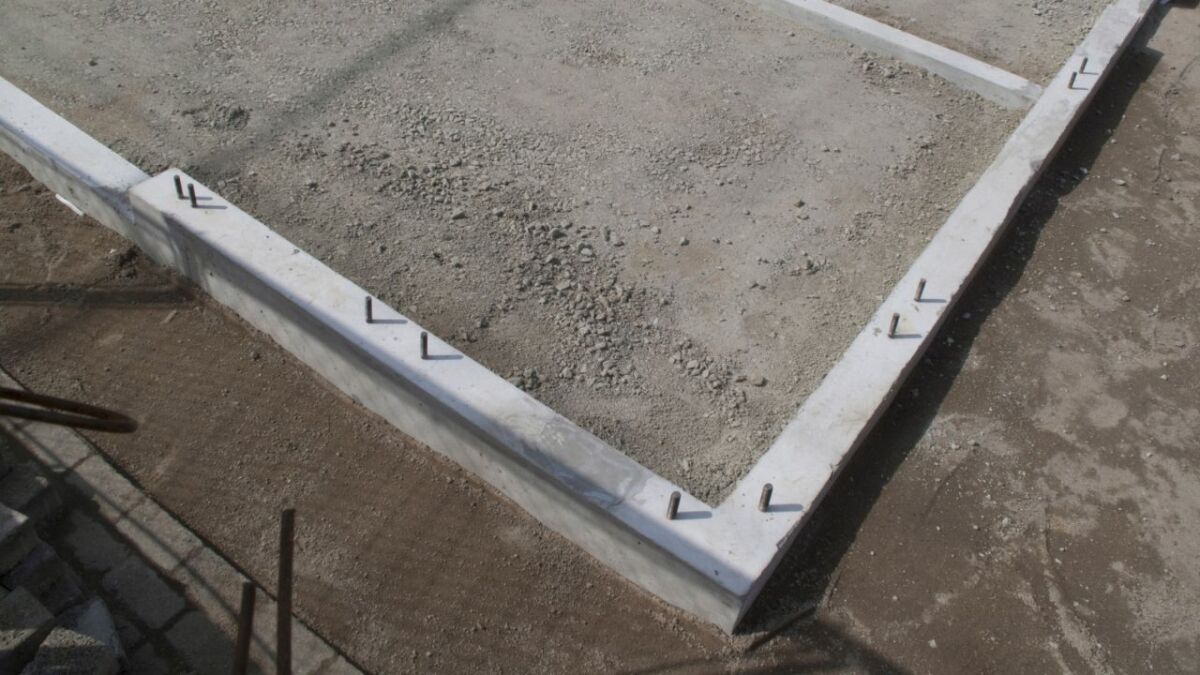
Advantages of Foundations without Concrete:
- Lower costs: Foundations without concrete are usually cheaper than concrete foundations, as they are often made of wood.
- Faster drying time: Foundations without concrete are usually ready for use more quickly.
Disadvantages of Foundations without Concrete:
- Lower stability: Foundations without concrete are generally not as stable as foundations with concrete and can be more easily damaged. However, they are usually sufficient for garden sheds.
- Higher maintenance requirements: Foundations without concrete may require more maintenance and may need to be painted or treated to stay in good condition.
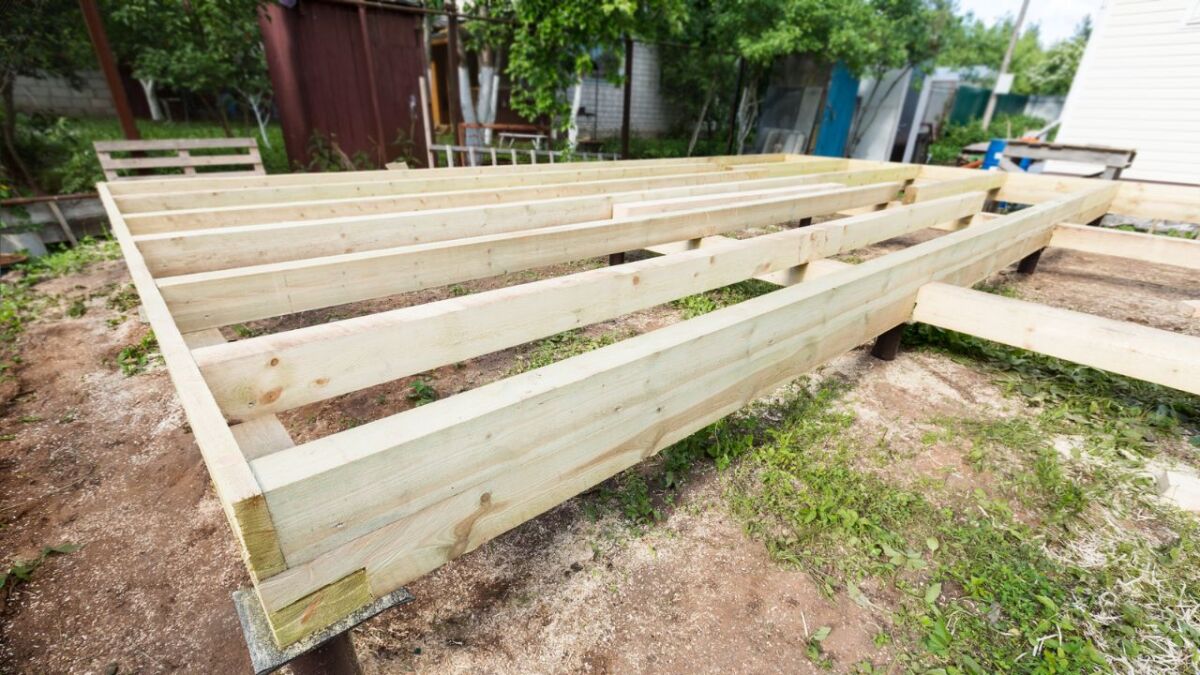
If you are unsure which foundation is best suited for your garden house, I recommend consulting a professional. They can advise you on whether a foundation without concrete is possible and advisable in your case.
Conclusion: a garden house can be a worthwhile purchase
A garden house is a valuable addition to a self-sufficient garden. It offers various uses, from storage of tools and materials to use as a workplace or retreat.
A garden house can also help facilitate self-sufficiency by providing protection from weather and insects and serving as a meeting point for exchange and conversation.
If you want to get a garden house, you should make sure that it has the right size, the appropriate material, and enough safety features. Moreover, consider that you may have to pay more if you want higher quality materials or more features.
Overall, a garden house is a valuable investment that offers both practical and relaxing uses and can be an enhancement to your self-sufficient garden.


Author of the guide
Martin Gebhardt
Hey, I'm Martin. On my blog, you will learn the basics and numerous details about living in the wild. I think survival, bushcraft and the good life in nature are the keys to happiness. Find me here on Instagram or on YouTube. You can find more about my mission on the About Me page.
Was this guide helpful?
12 people found this guide helpful.
5.00 out of 5 points (12 Ratings)
Comments (0)
This post may contain affiliate links. So if you click on the links and make a purchase, I will receive a small commission at no additional cost to you. Click here, to learn more about it.


